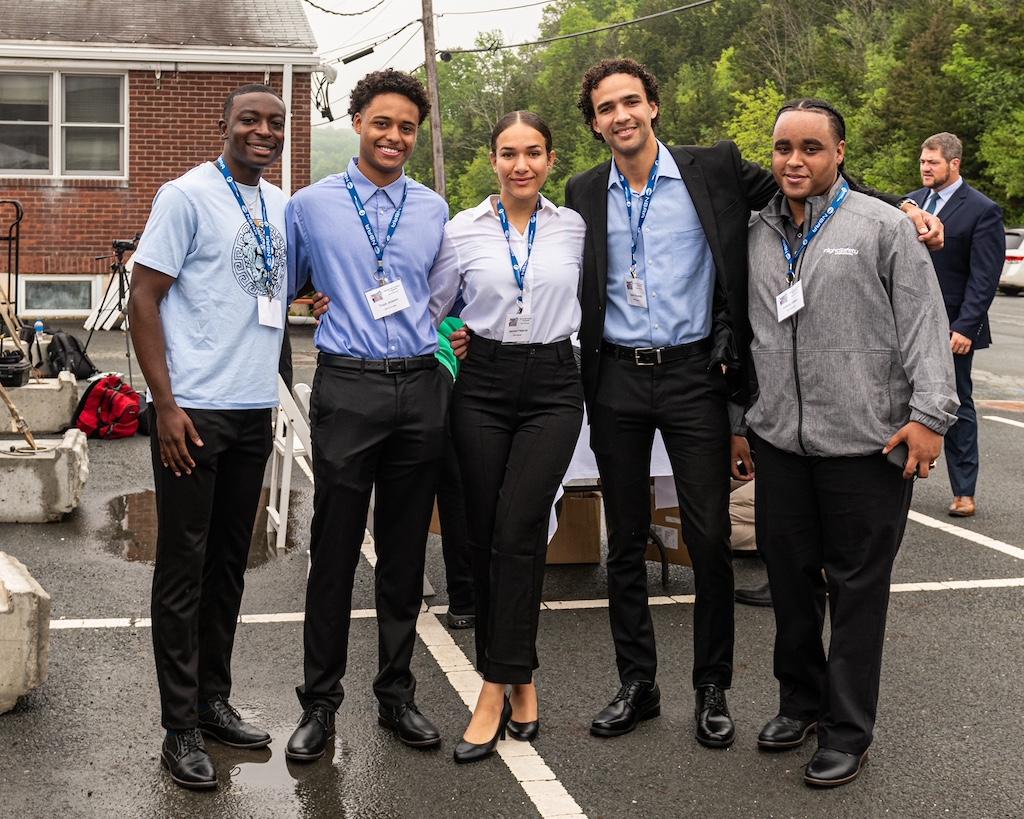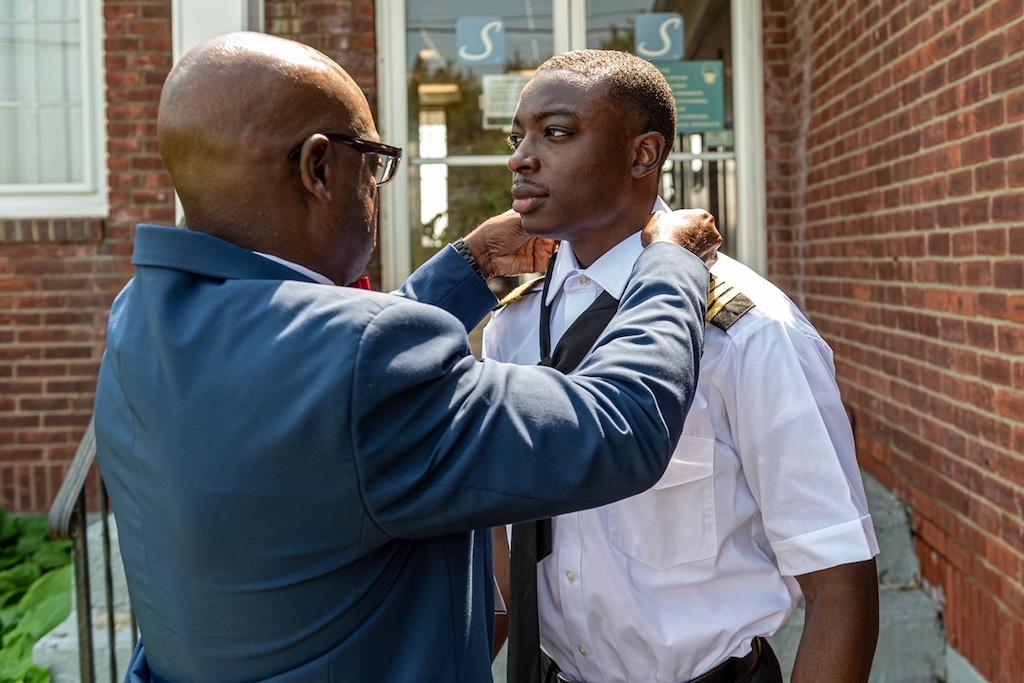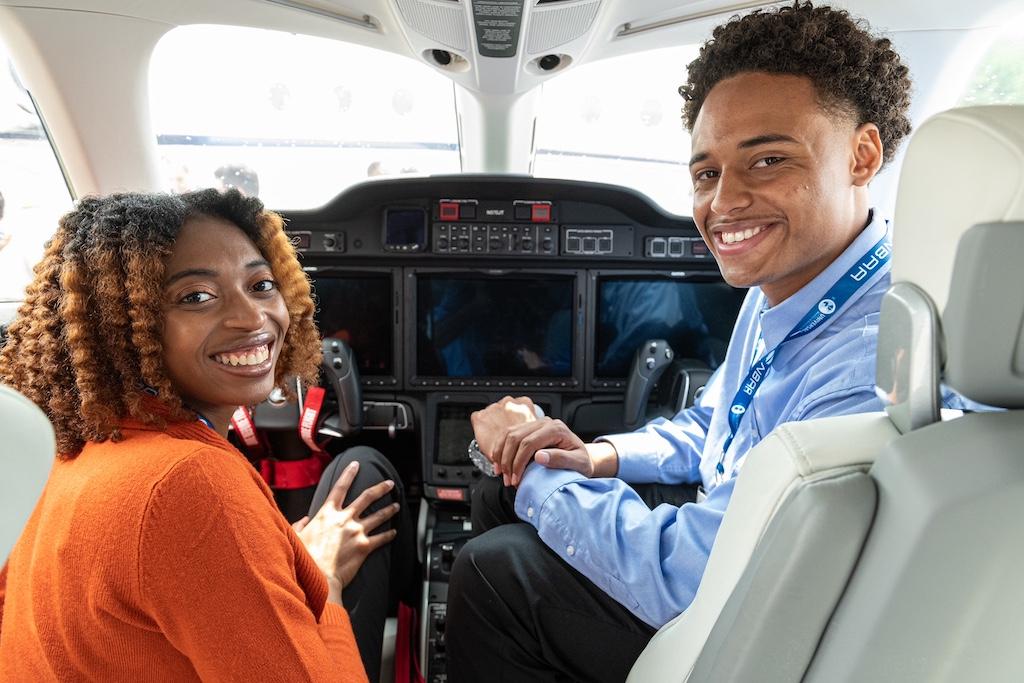
In the mid-1980s there was a film made by the 137th Airlift Squadron, my squadron, called “A Call to Duty.” The genesis of the film was the wing commander’s desire to show a number of different guardsmen as they went about their normal jobs and then received an activation order to fly a hurricane relief mission to the Caribbean.
It was a PR film, to be sure, but as I think back on it, we made a film that showed how the New York Air Guard felt about equal opportunity and employing folks from all sorts of backgrounds. There was a young Black copilot, now Boeing 777 captain, Glen Fraser. There was an Air Guard technician from Puerto Rico who was the engineer. The other engineer was an Italian kid from North Jersey (go figure). The load masters were made up of a female technician, a New York State Trooper and a Westchester County detective.
Our crew makeup was very similar on many of the missions. We were fortunate, because of our leadership, that that sort of thing wasn’t thought of—it just was. And it worked very well later through Operation Just Cause in Panama, Desert Storm and Desert Shield, Somalia and two later inspector general reviews that saw us get the highest grade possible. “I awarded the 105th an Outstanding for one reason. There was no higher level I could give.”
Take a look at the cultural breakdown of American citizens and you’ll find the same as in my days in the New York Air Guard. And it succeeds to this day as the unit recently received very high praise for its efforts in the Kabul evacuation.
‘Give ’em a Chance’

Without putting words in his mouth, that’s where Glen Fraser and the RedTail Flight Academy are going. He’s not trying to make professional aviation into an all-Black occupation. He’s trying to assure that young members of that community get their feet in the door and get the chance to prove themselves. He’s doing a darn good job of it.
As a follow-up to last year’s visit, I recently called Glen to see how some of the young people I interviewed were doing now that they’ve graduated from the RedTail program and moved on. This would be the real proving ground.
In each of their cases, they’d gone from highly motivated and very capable young people “trying as hard as I can” to a position where they were the first class at the RedTail Academy that would receive flight time and ratings beyond what they and their hard-working parents ever though financially possible. They were, in fact, celebrities, whether they knew it or not. They were on a pedestal of opportunity that was earned through hard work and perseverance, but the payout, for the program, was the challenge that lay before them. They’d been given a chance by people whose hearts were dedicated to helping them in every way that they could. At graduation, it was time to go out into the real world.
Let’s Have A Look

Anthony Gilbert, if you remember, is from the U.S. Virgin Islands. As a kid, he had dreams of walking down the hill he lived on and flying out of the airport below. His dad, a fireman, and his mom, a local shop owner, got right behind him as well as the USVI chapter of the Tuskegee Airmen. His background got The RedTails’ attention and he graduated this May with the rest of his class. He did a lot of training through Olive Branch, Mississippi, and now is an intern there at the Luke Weathers Flight Academy where he’s finishing up his instrument rating. He has a strong realization that the RedTails will “continue to grow and become a beacon of hope for many more to come.”
Traye Jackson was the young man who saw the original “Top Gun” movie and decided he’d rather consider himself, as U.S. Army Air Forces Gen. Carl Spaatz said, “a different breed of cat…[he] flew through the air while the other people walked on the ground. It was as simple as that.”
After college, Traye headed to Florida for a set of ratings. He wound up back in Denver with a mountain of debt and no ratings as his money had run out. The faithful tutelage of local Tuskegee Airmen and his work ethic, holding down two jobs and doing a double shift on some days to pay off his debt, got him noticed and into the RedTail program.
Traye has nothing but good to say about the RedTail program. He earned a CFI and is going to be an instructor for the RedTails with the next class. He told me he’d do that last year, but that finish line was a long way in front of him at that point. Well, he crossed it. He is working on a second-in-command (SIC) rating on a Falcon 50EX while interning with a huge training company in the Northeast. As I see it, his main takeaway from the academy was the desire it instilled in him to be like Glen and the pilots who instructed him. To give back to others as he had received.
When I last visited with the RedTail pilots at Stewart International Airport, I made quite a spectacle of my initial attempt to fly the Redbird MCS simulator—to the great delight of my friend Glen. I did get it down and thought I was doing a pretty good job when Glen said to Calvin Fredericks, “Jump in there, Calvin, and show us a couple of patterns.” He flew it as smoothly as a light airplane on a cool summer morning. I remember that performance to this day.
Calvin finished pre-med in college but had added business administration to his resume before graduation. He developed and sold a company and had hoped to use that money to obtain his licenses, but he fell short of funds. Having strong family support, he continued trying.
After RedTails, Calvin started working for Guardian Jet out of Guilford, Connecticut. To say that Guardian has strongly supported the RedTails would be an understatement. They have worked with Glen for years and continue to do so by offering Calvin an internship as a research analyst that morphed into a shot at a position in the sales department. Additionally, Guardian supports him as he earns his MEI and begins instructing with a local company.
Reach Back And Help

Observing these youngsters, I can’t help but think back to the original RedTail Pilots, the so-called Tuskegee “Experiment” because they trained at the Tuskegee Institute in Alabama and no one thought they were doing more than an experiment to prove that Black pilots couldn’t fly as well as white ones. They, as we all know, went on to prove that concept was wrong.
But they didn’t stop with that achievement. Many stayed in the military, and four of them—Capt. Alva Templeton, 1st Lt. James Harvey III, 1st Lt. Harry Stewart and 1st Lt. Halbert Alexander—were part of the team of Black pilots that won the 1949 Fighter competition. That competition was the first USAF Fighter Gunnery Meet—Top Gun. Many of those airmen went on to become highly successful businessmen, doctors and senior Air Force officers. Others, just like many of us, came home from war, went to work, raised a family, and did the best they could to advance themselves and their families in what was still, for Black Americans, a very difficult chore.
I see “reach back and help” in the way these young folks look at their careers. They are not satisfied to have been selected and participated in a program such as the RedTail Academy. They do not want to take their “prize” and move on to a successful career. They, like the Tuskegee Airmen down through the decades from World War II, want to help advance the cause of aspiring pilots of any color. They intend to move ahead but stop to look back and give out a hand. It’s inspiring to see how they feel.
In Part 2, we’ll catch up with three other recent graduates from the RedTail Flight Academy.





